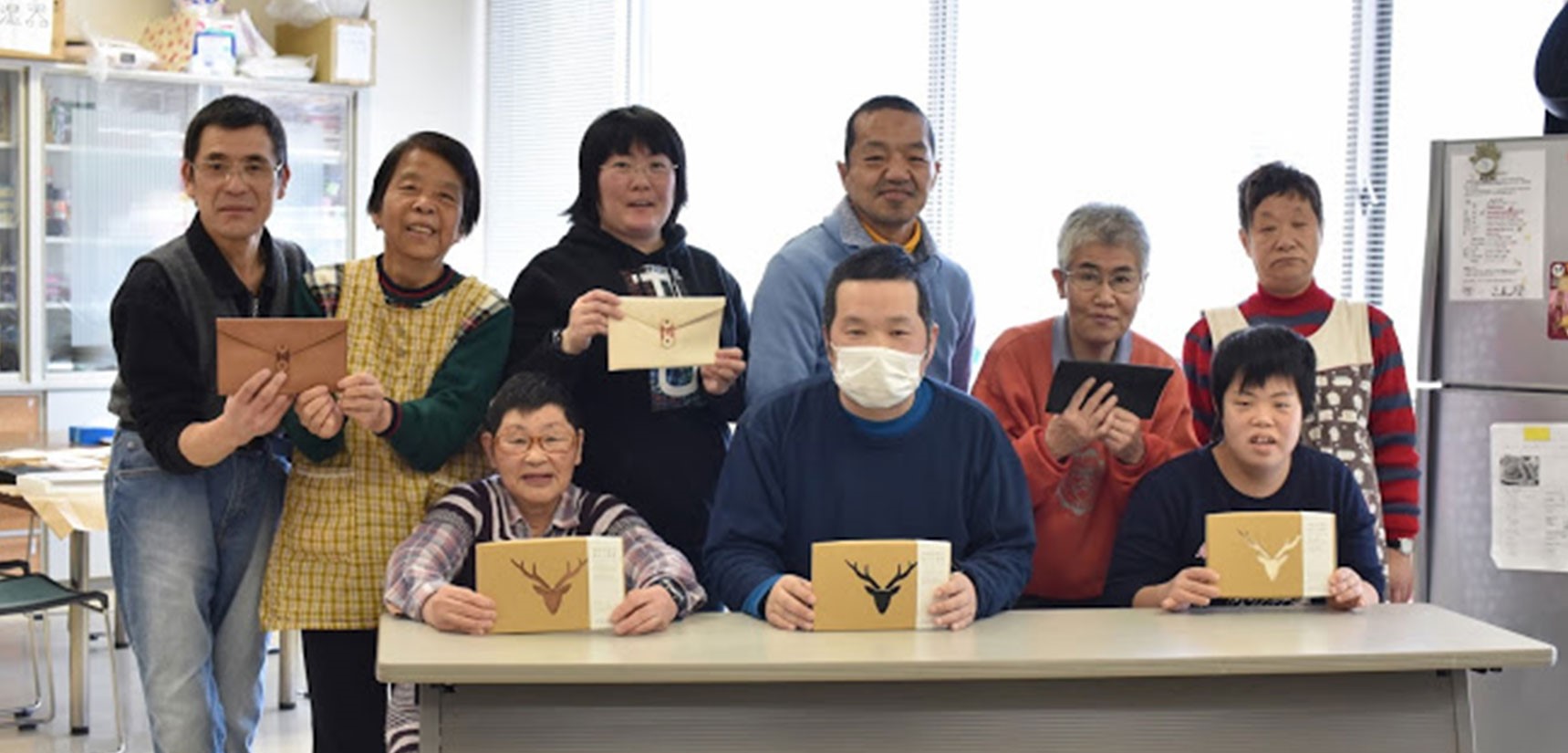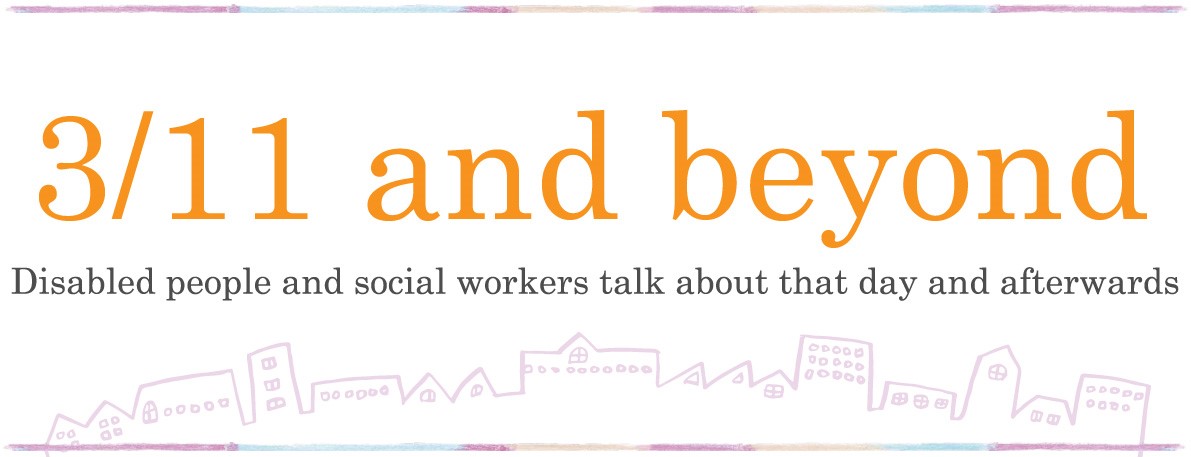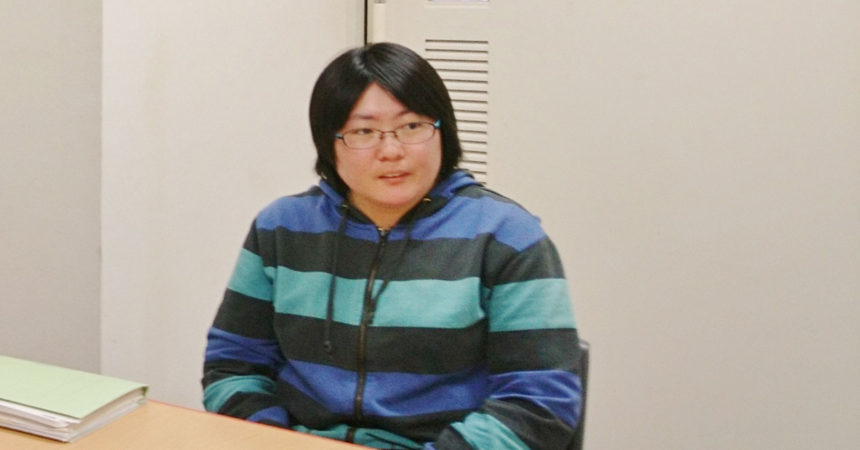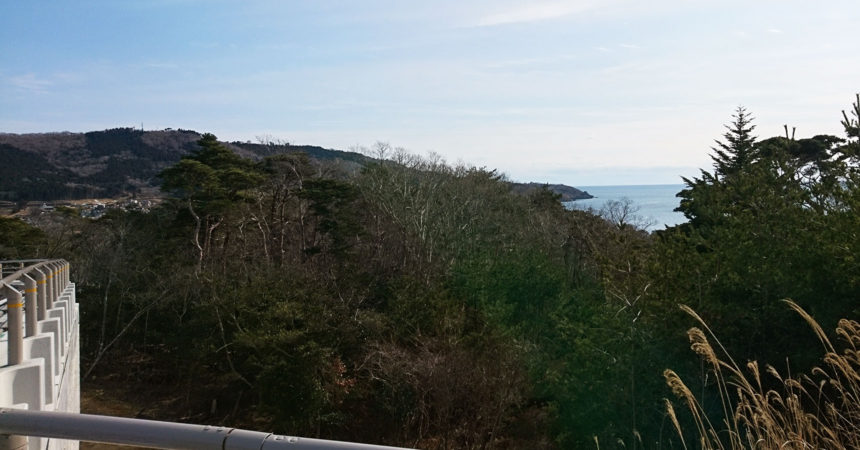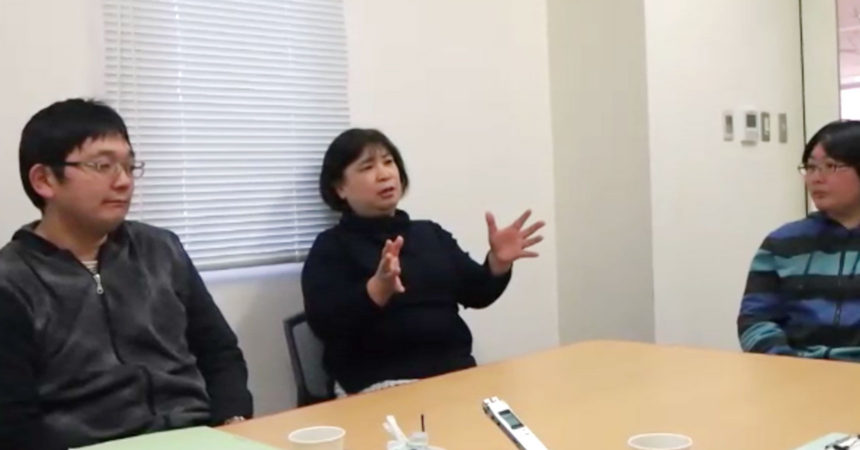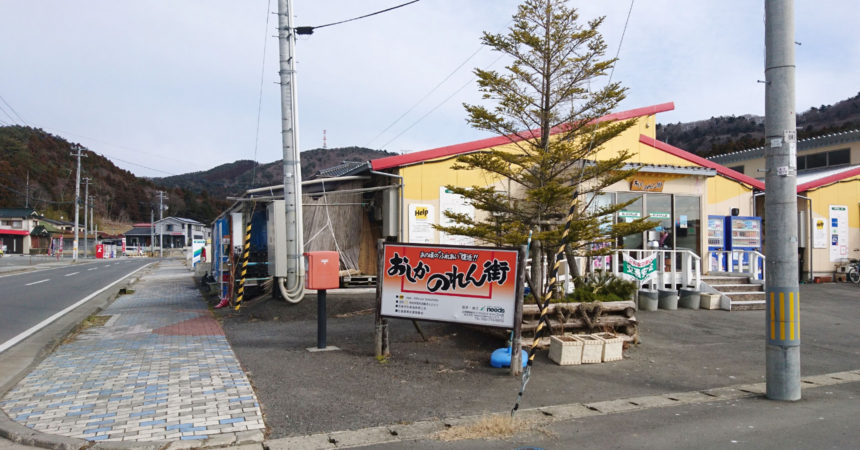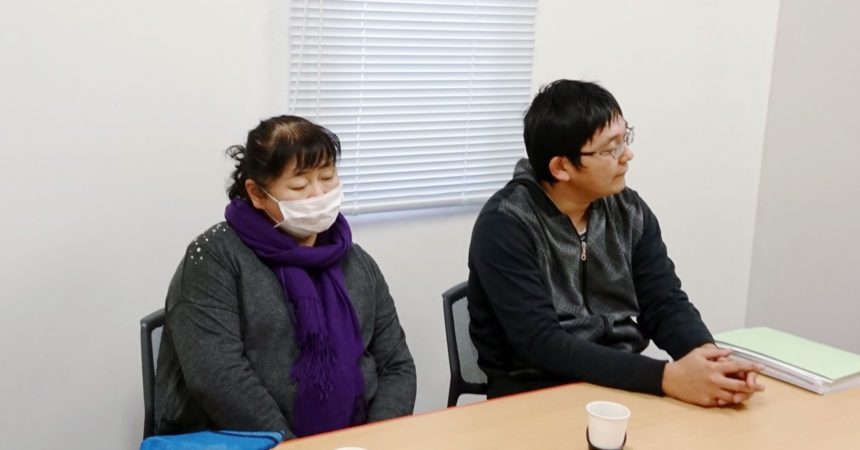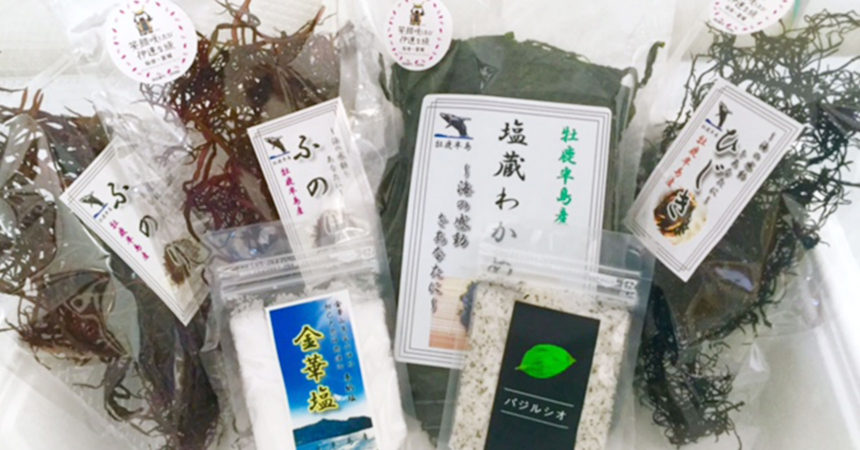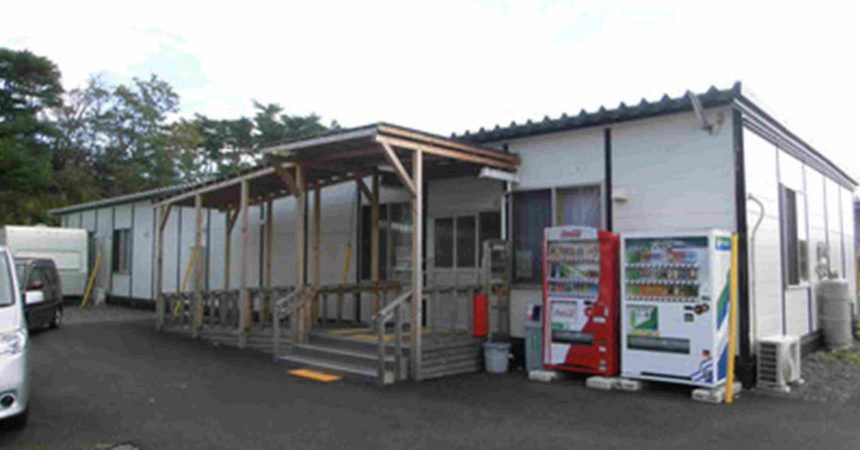
Even though help wasn’t coming and everyone felt like giving up, they didn’t forget to speak up.
Did supplies arrive after the temporary group home was built?
Kayoko: For start-up supplies, we had declared these 7-piece sets our trainees would need when they entered the group home, so we got those.
But there was a general temporary housing complex behind our temporary group home, and they got daily supplies for each household there, but none came to our group home. Even though daily supplies had arrived for everyone in the region, our group home was ignored in spite of this perfectly visible building.
Ogawa: Like potatoes and mandarin oranges. Only the people in the house behind us got those.
Kayoko: Not that we really wanted those things.
Right.
Kayoko: You can see the entrance of that temporary housing complex right outside our group home window, so our trainees could see supplies being brought in. So I think maybe they felt a bit bad.
Why were those group home residents left out from the daily supply distribution?
Kayoko: We weren’t on the local registry somehow. When I noticed that, I tried to identify the problem by asking questions like, “What number of what district are we?” If you’re not on the registry, you don’t get local information, and it’s difficult to live in the region if you haven’t built a community with local people in case something happens, so I had us put in the registry. As we started getting involved like that, the region started cooperating with us.
Ogawa: Anyway, no supplies came for around the first 2 months after we moved into the temporary group home.
What supplies came?
Ogawa: Vegetables and stuff.
Kayoko: They were living in a different place than before, so they didn’t know who the ward mayor was, and often felt uneasy about communicating with neighbors and such. I heard them say, “How are we different from our neighbors?” It seems they were treated differently from the average temporary housing complex.
